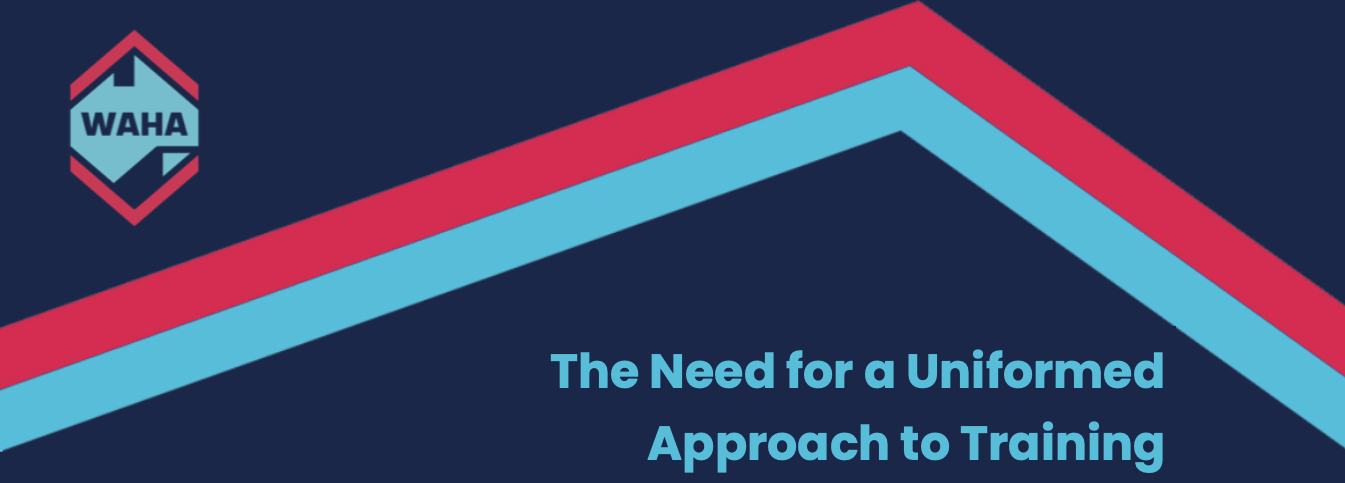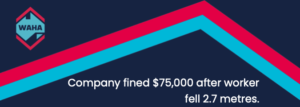
The Working At Height Association of Australia (WAHA) forum, addresses working at height training requirements.
IN EARLY MAY 2021, WAHA ORGANISED A forum bringing together principal trade associations, representatives from SafeWork NSW, a leading industrial law firm and industry groups all identifying with the issues relating to working at heights. The forum was designed to encourage open conversation about height safety and the needs and requirements of the various industry sectors.

The Forum took place in the McKnight training room at 3M, who generously made available its extensive facilities to accommodate the in-depth discussion. WAHA arranged for various presentations from ‘Persons Qualified’ to talk on height safety issues. The day included presentations from various areas of expertise and provided an interactive background to the Forum discussion. Each presentation was extremely informative and each provided attendees an opportunity to question and add to each.
The presentations which were delivered by:
Mr John Makris: Partner – Kingston Reid
Kingston Reid is a leading NSW Workplace Health & Safety law firm practising in areas of workplace and occupational health and safety matters. Makris is recognised by the New South Wales legal market and he has been commended by the state’s employment law barristers and solicitors for his expertise and abilities in these areas. Michael Biddle: Chairman of the Working at Height Association
Biddle has over 17 years’ experience in the height safety industry as a manufacturer, RTO Manager and Director of a height safety installation and distribution business.
Karlene Knighton: Acting Manager, Harm Prevention and Compliance Programs | Construction Services Group SafeWork NSW.
Knighton provided insights into the work Safe Work is carrying out to strengthen the understanding of the risks and mitigation of death and injury working at height.
David Etheridge
Etheridge has vast experience is in construction often working in the position of a Person Conducting Business or Understanding with a background in the supervision of those working at height.
“We should never forget that gravity is no respecter of persons, it affects everyone often with disastrous consequences resulting in serious, permanent injuries or death. Of real concern is that industry statistics gathered by Safe Work Australia and those of the various States and Territories over the last 5 years have shown that despite all the best efforts of regulators, associations and employers the number of injuries and death from working at height has really not changed in any significant way,” said Etheridge.

It was recognised that injuries and deaths are not limited to any specific industry group or sector, as all industries are exposed to the hazard although the level of incidence varies considerably. The forum was able to discuss a wide range of issues affecting industry and training both poor and good and managing those risks.
“We should never forget that gravity is no respecter of persons, it affects everyone often with disastrous consequences resulting in serious, permanent injuries or death.
David Etheridge
The forum looked examined the costs of fall incidents, not just the dollar costs but the emotional pressures that these incidents place on all those involved along with time-line losses, production delays in work output, the
WAHA, Safe Work, other organisations and individuals prepare and print numerous documents containing thousands of words relating to the risk of working at height. This documentation is designed to reinforce the messages to those at risk, and yet results do not improve with the injury and death rates remaining fairly constant. The questions attendees of the forum were asked look at and suggest possible changes to, is the way industry looks at the quality of training for working at height. To examine the quality and type of training required, there is a need
to understand that any person who is required to work at height should have training to enable them to work safely in what is a high-risk position.
The Regulators work practice documents require those who are involved in working at height should be competent, the requirements of the Regulations ‘kick in’ when someone is working at height often at 2 metres though falls can be from any height, falls from heights lower than metres have resulted in serious injuries and even death. The employer has a duty of care under Section 21 to ensure that plant, and systems of work, are safe and without risks to health, so far as reasonably practicable.
It is recognised that equivalent or better ways of achieving the required work health and safety outcomes may be possible. For that reason, compliance with codes of practice is not mandatory providing that any other method
used provides an equivalent or higher standard of work health and safety than suggested by the code of practice.
Therefore, the type of training needed will vary depending upon the level of risk involved in doing the work. Some workers will need formal training to do their work safely. This includes: operating high-risk equipment, such as a forklift or cranes; working in high-risk places, such as a construction site.
There was an appreciation of this by the attendees of the Forum which became the basis on which the following items were tabled providing a healthy the discussions on each of the points listed here;
Points in the discussion included;
• To work towards engagement with Industry
• Industry recognition of training programme
• Industry modules
• Risk management to identify hazards
– Recognition of risk
• Base Line training to develop skill Sets
• Look at a code of practice present future skill requirements
• Standardised training content
– Several layers of training / skill sets
• To develop Quality training module content
– What does this include and what are the expected outcomes?
• Possible work check and balances
• Association led training packages
• Working at heights passport system
– Would need industry recognition
The meeting thought that WAHA should work towards a training programme acceptable to industry which would include a balance of theory and practice to provide a reasonable level of knowledge to help towards the recognition of risk developing a clear vision of what we are looking to achieve and how to achieve the outcomes expressed at the Forum. We can only reduce the injuries, death and high cost from working at height with support and assistance provided by Industry working together providing a way forward, WAHA in conjunction with the International Exhibition & Conference group are looking to present a more in depth look at the possible changes and Industry acceptance of the changes relating to Working at Heights training where we would invite industry representatives to join us at the Safety Conference in Sydney on September 7th and 8th 2021.
Article Written for Cranes&Lifting – July 2021 Edition






